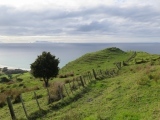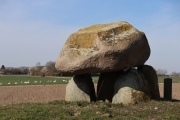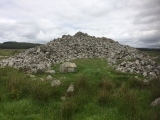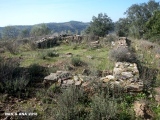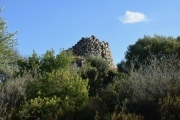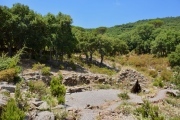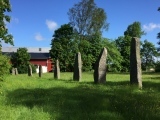Andy Burnham's Blog, page 192
July 14, 2020
Te Kiri's Pa
A Maori Pa located on the new Pakiri Regional Park 120 kilometres north of Auckland city. There are magnificent views from the pa which has small but well preserved defensive terraces on its south western aspect and steep approaches on all other sides. It would have provided an outstanding vantage point from where to survey the territories occupied by the local Ngati Manuhiri people along this sometimes fought over coastline. The name of the pa derives from Ti Kiri, a paramount chief of the Ngati Manuhiri hapu (sub tribe) of the Ngati Wai tribe.
Published on July 14, 2020 02:22
Nagelsti Megalitgrav 1
Megalitgrav (Burial Chamber) in Maribo. Approximate translation from Danish: The remaining mound is 11 x 7m and just 0.60m high. No kerbstones. Orientation is SW-NE. A few loose larger stones are seen at the NE-right corner of the right stone. Flint pieces were found on the floor of the chamber. Set of 5 supporting stones. Of these, 4 are good and large. Appears reconstructed.
Published on July 14, 2020 02:22
July 12, 2020
Drumwhirn Cairn
Drumwhirn Cairn is impressive on approach however closer inspection shows significant stone robbing. The summit has been excavated leaving a dirt filled hollow behind. Drumwhirn Cairn is on a highpoint with extensive views all round. It is around 30 metres across and 5 metres high. It must have been spectacular before people started messing with it.
Published on July 12, 2020 07:30
Castro dos Ratinhos
A fortified settlement in the community of Moura (São João Baptista) near the town of Moura, District of Beja, Portugal. The site is located next to the Alqueva dam in a hill, at a high point with a greater view of the surrounding landscape next to the Guadiana river. It was probably built in the final Bronze Age period at around 1100 BC and was occupied througout the Iron Age. The village was made up of clusters of circular huts built with mud and thatch and distributed over staggered platforms. The housing complex was protected by complex defensive structures that still retain important traces, integrating several lines of stone walls that crowned artificial slopes, drained by a monumental ditch dug directly into a schist outcrop.
Published on July 12, 2020 06:24
Nuraghe Aleri
Nuraghe Aleri stands on a hill in front of the beach of Sarrala, Tertenia, Sardinian East coast. Built with granite boulders, it is composed of a central tower and three lateral towers, joined by straight walls.
Published on July 12, 2020 06:15
Matzanni
The archaeological area of Matzanni is a complex of sacred buildings of the Nuragic and Punic age, located along the border between the municipalities of Iglesias and Vallermosa, in the province of Southern Sardinia.
The complex, 700 m. above sea level, is composed of three sacred nuragic wells and circular huts of the same period, dating back to the late Bronze Age and the Iron Age.
The complex, 700 m. above sea level, is composed of three sacred nuragic wells and circular huts of the same period, dating back to the late Bronze Age and the Iron Age.
Published on July 12, 2020 06:05
July 10, 2020
Xaytem Ancient Native Settlement
Ancient Settlement and Sacred Stone in BC, Canada. The XeXa:ls were, prominent figures in Sto:lo oral history, they taught three si:ya:m (respected leaders) how to write the Halq'emeylem language, and instructed them to share this knowledge with the Sto:lo. When they did not, XeXa:ls transformed them into stone. This rock called Xa:ytem (literally "sudden transformation") is said to contain the "shxweli" or "Life Force" of the three si:ya:m and exemplifies the importance of preserving Sto:lo history, culture, and spirituality.
Published on July 10, 2020 05:55
July 9, 2020
East Mebon
The East Mebon is a 10th Century temple at Angkor, Cambodia. Built during the reign of King Rajendravarman, it stands on what was an artificial island at the centre of the now dry East Baray reservoir. The site was dedicated to the Hindu god Shiva and honours the parents of the king. Its location reflects Khmer architects concern with orientation and cardinal directions.
Published on July 09, 2020 12:18
Stenehed
Much more than a stone row here. This cemetery site consists of 25 barrows, one stone circle, one stone ship setting and the nine stone row (possibly 12 originally). Iron age; 400-600 AD
Published on July 09, 2020 12:11
July 6, 2020
Book Review: Of Mounds & Men, Prehistoric Barrows of the Frome Area - Mick Davis
Book Review: Of Mounds & Men, Prehistoric Barrows of the Frome Area by Mick Davis. I met the author at the talk I gave in Frome last year. Mick had left a copy of the draft section about the Fromefield barrow at the bookshop for me to pick up and very intriguing it was, and is.
Published on July 06, 2020 05:25

